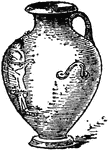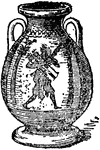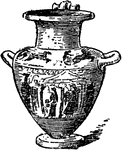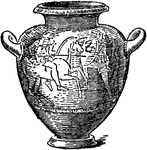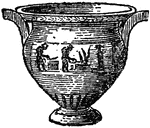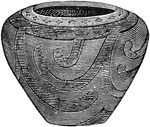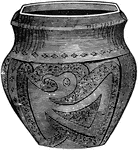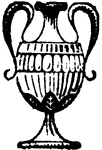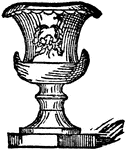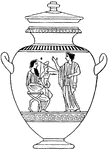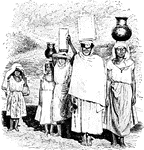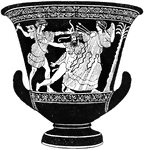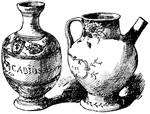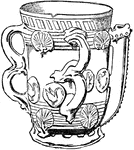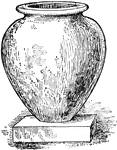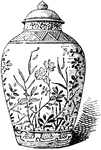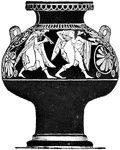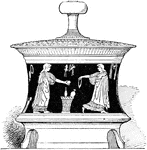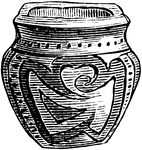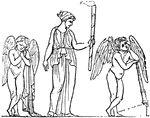
Fax
"A torch. In the annexed woodcut, the female figure is copied from a fictile vase. The winged figure…

Olla
"A vessel of any material, round and plain, and having a wide mouth: a pot; a jar. The following woodcut…

Chrismatory
A receptacle for the chrism, or holy oil, used in the services or the Roman Catholic and Eastern Churches.

Thrones
"The following wood-cut from a fictile vase in the Museo Borbonico at Naples, represents Juno seated…

Egyptian Glassblowers
"The form of the bottle and the use of the blow-pipe are unequivocally indicated; and the green hue,…
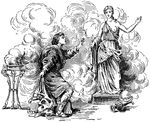
Pygmalion
"The story of Pygmalion and his statue is in all probability an allegory. Pygmalion was a virtuous and…
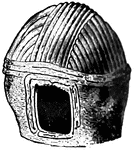
Clay Urn
A vase, ordinarily covered and without handles and usually has a narrowed neck above a footed pedestal.
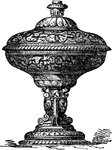
Vase
"Vase of Henry II ware. Henry II ware was precious, consisting of glazed white ornamental pieces." —…
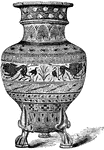
Fictile Vase
"Fictile vase, from Athens. Design in black, on drab ground." — Encyclopedia Britanica, 1893
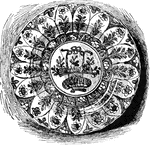
Pot Plate
A plate of Chinese porcelain, or of some fine European fience, in the decoration of which appears a…

Greek Pot
A small vase of elegant form, resembling the oinochoe, but in general more slender with a raised handle.

Chelys
"Chelys, from a vase in the British Museum, where also are fragments of such an instrument, the back…
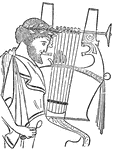
Lyre
"Cithara or Phorminx, from a vase in the British Museum. Best period of Greek art." —The Encyclopedia…

Brass Vase
"Brass Vase, pierced and gilt; 17th century Persian work." —The Encyclopedia Britannica, 1903
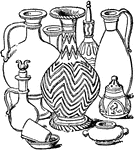
Alabaster
A form of silicate that is found in great abundance throughout Europe. It is white and can be scratched…
Banner
This banner contains a design of a vase in the center with several vines overflowing out of it.
Banner
This banner contains a vase in the center of the design and is surrounded by overflowing vines.
